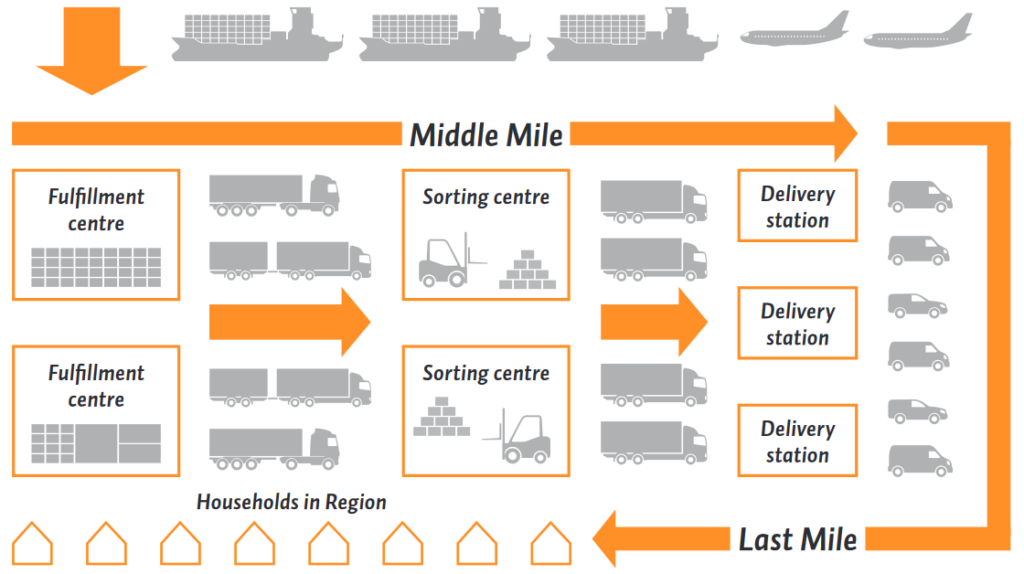Share Twitter Facebook Email Copy URL
How the number-one online retailer is driving job insecurity in logistics

A publication of the Rosa-Luxemburg-Stiftung in cooperation with the dgb-Bildungswerk Thüringen e.V. and the Rosa-Luxemburg-Stiftung Thüringen.
First published on rosalux.de.
Amazon’s Last Mile is an abbreviated, English translation of a longer study published in German. Download the original here.
Amazon, the multinational corporation from Seattle, is on its way to becoming a digital superpower. One of the strategic areas in which Amazon is aggressively increasing its market power is logistics. It has entered the ocean freight business and operates its own cargo airline, which is now the world’s fourth-largest. The coronavirus crisis, which for Amazon was not a crisis but rather the biggest shopping boom of all time, has seen the retail colossus gain ground at an accelerated rate.
Since around 2017, the corporation has been developing its own logistics system for the “last mile”, the final step of the delivery process from a delivery station to the customer. Huge “fulfilment centres” are supplemented by an ever-more densely woven network of sorting centres and delivery stations. Amazon is not just elbowing traditional parcel delivery services out of the market with these developments—it is actively driving job insecurity in an industry that is already under huge competitive pressure. Since the beginning, “Amazon Logistics” has used a network of dependent subcontractors for its operation. In addition, the company is experimenting with a gig workforce model called “Amazon Flex”.
Amazon did not invent the subcontractor system in parcel delivery logistics. But it combines the commercial advantages of this kind of outsourcing with digital monitoring, algorithmic control, and artificial intelligence in a way that is only possible for a gigantic tech corporation.
This model creates a structural situation of increased competition, where subcontractors inevitably try to pass on the pressure to their employees. A recent case study from Germany shows how this leads to systematic violations of labour rights: excessive working hours, a lowering of the legal minimum wage, shifting liability risks onto employees, and so on.
This pamphlet explains how Amazon Logistics works. We also take a look at approaches by unions in Germany, Italy, the United States, and Switzerland that offer hope. With solidarity, strategy, and organization, countering ever-worsening working conditions is possible.



